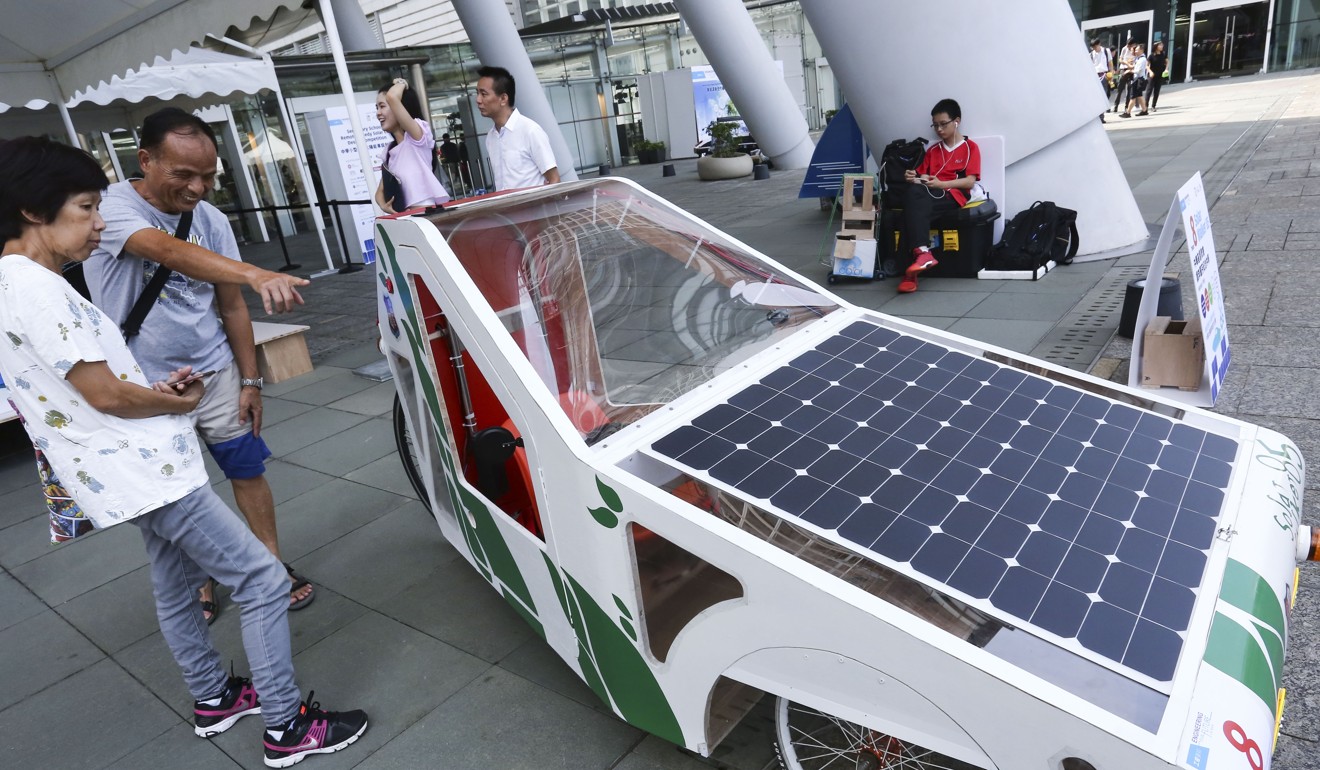
Hong Kong leader doubles R&D expenditure to HK$45 billion for next five years to boost ‘smart city’ innovation
Goodies include enhanced tax deductions and additional university funding
Lam also acknowledged the thorny role that financial regulation has played in innovation. She pledged to remove “outdated provisions”and “red tape” by leading a high-level steering committee herself covering different government departments.

The initiatives came amid long-standing criticism that the city lacked resources dedicated to technology and innovation. Hong Kong spent only 0.73 per cent of its gross domestic product on R&D, falling behind South Korea (4.23 per cent), Japan (3.28 per cent) and China (2.07 per cent), according to the latest World Bank data.
To reach Lam’s target, a total of HK$45 billion is to be invested annually to develop new technologies and products, with government contributing 45 per cent of the figure, according to a government source familiar with the matter.
“Of course, if you compare this absolute value of 1.5 per cent with the 4.7 per cent for Shenzhen, and 2.7 per cent for Guangzhou, it is still relatively low,” Professor William Wong Kam-fai, associate dean of engineering at Chinese University of Hong Kong, said.
7 things you need to know from Hong Kong leader Carrie Lam’s policy address
“But we should rather look at the increment [of 0.72 per cent], which is not bad at all,” he said, describing the goal as feasible and practical.
Billy So Chi-on, founder of start-up investment company Central Exchange, said the policy address was a good start but claimed officials always addressed innovation and technology in generalities rather than specifics.
Carrie Lam in her own words: Hong Kong people are still ‘brilliant’
Lam further encouraged private investment by giving firms a 300 per cent tax deduction for the first HK$2 million they spent on R&D, and 200 per cent for the rest. At present, the deduction stands at 100 per cent for any R&D outlay.
Alex Kong, CEO and founder of TNG Wallet, an e-wallet company, expressed excitement over the proposed tax incentives, even though he wished the announcement came several years earlier.
“The more you spend on R&D the more tax rebate you get,” he said. “It’s definitely very encouraging. I wish this policy came out many years ago when we first started our IT company.” Kong claimed his firm spent more than HK$200 million in R&D over the past five years.
This year’s policy address saw Lam roll out a hefty package for universities, setting aside more than HK$10 billion to fund research at the local public institutions. The city’s research support strategy and funding allocation mechanism for the higher education sector are to be overhauled. The effort is being led by former University of Hong Kong vice chancellor Professor Tsui Lap-chee.
In the meantime, HK$3 billion are to be injected into the research endowment fund to offer studentships, enough to cover tuition fees for local students admitted to universities’ research postgraduate programmes.
For some postdoctoral graduates, career prospects are expected to brighten next year. The government will add HK$30,000 to their monthly income from companies in Science Park, Cyberport and those involved in government-led projects that recruit top local researchers. Up to two candidates per company are eligible for the scheme.

For young entrepreneurs who want to start their own business, they might soon be able to find an affordable office in the city. Some 60,000 square feet at revitalised industrial and commercial buildings are to be made available at no more than one third the market rate.
The chief executive in her policy address said the new model had become “increasingly popular on the mainland and overseas cities in recent years, leading to the emergence of many new economic activities”.

In addition, Lam unveiled some features of the proposed smart city blueprint, including creating an “e-ID” for every Hongkonger to facilitate online transactions, and installing multifunctional smart lamp posts to collect real-time data to manage traffic.
New on-street parking meters that could help drivers find parking spaces are slated for installation from 2019 to gradually replace the city’s current meters.
Information technology sector lawmaker Charles Mok said he was happy to see Lam’s determination in formulating effective IT policies, instead of “simply using money” to solve problems.
“[She] acknowledged a lot of issues, including the lack of leadership and lack of coordination between different government departments,” he said.
Additional reporting by Raymond Yeung, Harminder Singh and Elizabeth Cheung

